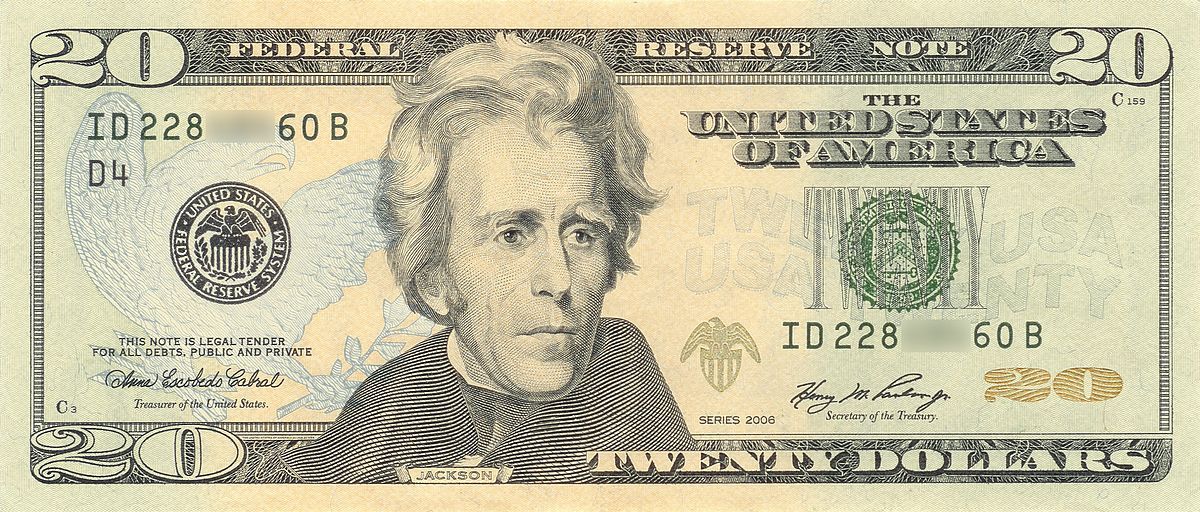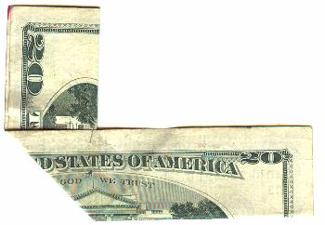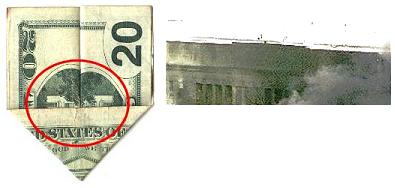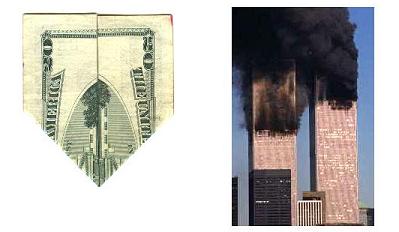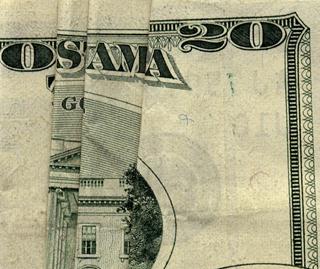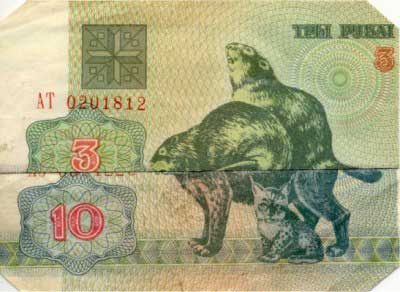Folding common paper images such as currency and familiar product packaging to produce amusing (and often risqué) new images is a pastime with a long history. After all, several generations of kids have now learned that if you cut a few holes in a package of "Land O Lakes" butter and fold the portion with the pictured Native American girl's knees up just right, you can make it look like she's holding her breasts:
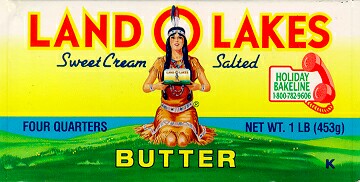
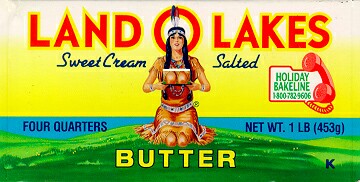
Examples: [Collected on the Internet, 2002]
The new U.S. $20 dollar bill contains
hidden pictures of the World Trade Center and Pentagon attacks!1. Fold a $20 bill in half so that you see the top half of the reverse side. 2. Fold the left half away from you as shown. 3. Fold the right half so that the burning Pentagon is revealed. 4. Flip the bill over to see the World Trade Center. To those (few, we hope) who might be tempted to take something like this seriously, we'd simply point out that:
- The current U.S. $20 bill was the product of a redesign introduced by the U.S. Treasury back in September 1998, a full three years before the terrorist attacks.
- Since all denominations of U.S. currency higher than the $2 bill feature an engraving of a building surrounded by trees and/or shrubbery on their reverse sides, it isn't difficult to find a bill that can be folded to create an image similar to that of a burning building (with the leaves or shrubbery functioning as the "smoke").
- The truly dedicated can even find a way to combine the letters in the printing to form the name of the perpetrator:
As far as fun-filled financial folding goes, you can usually obtain better results with bank notes from Europe, where countries don't all put nothing but pictures of buildings and stodgy old political figures on their money:
Of course, in some cases you don't even need to fold the currency:
